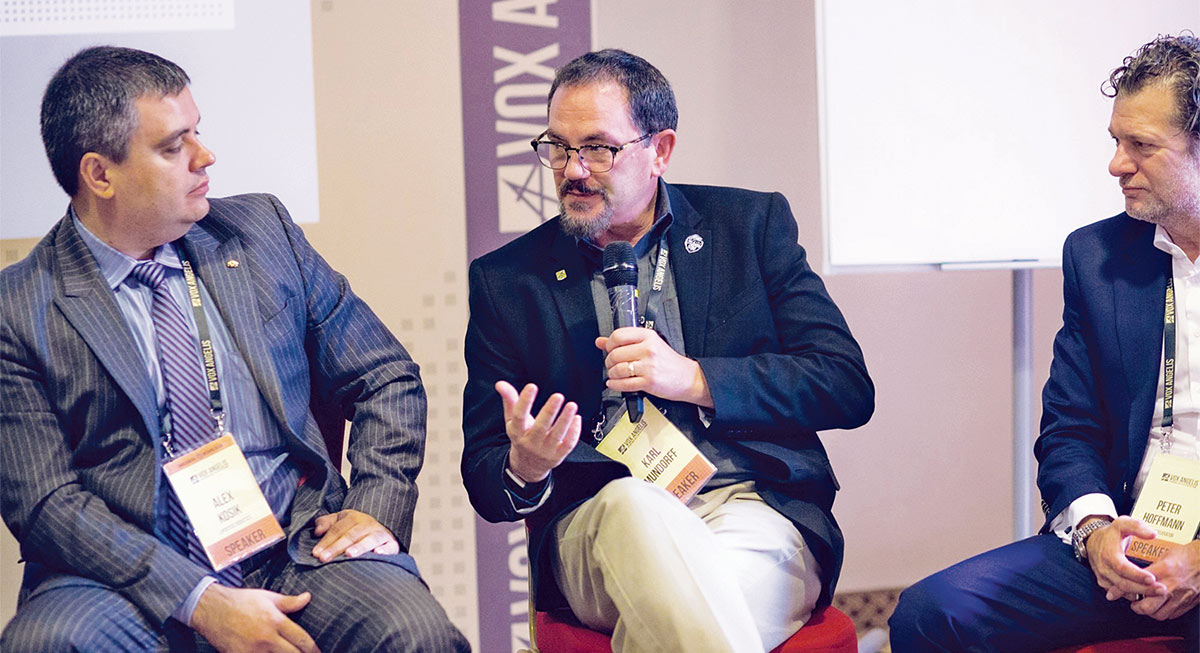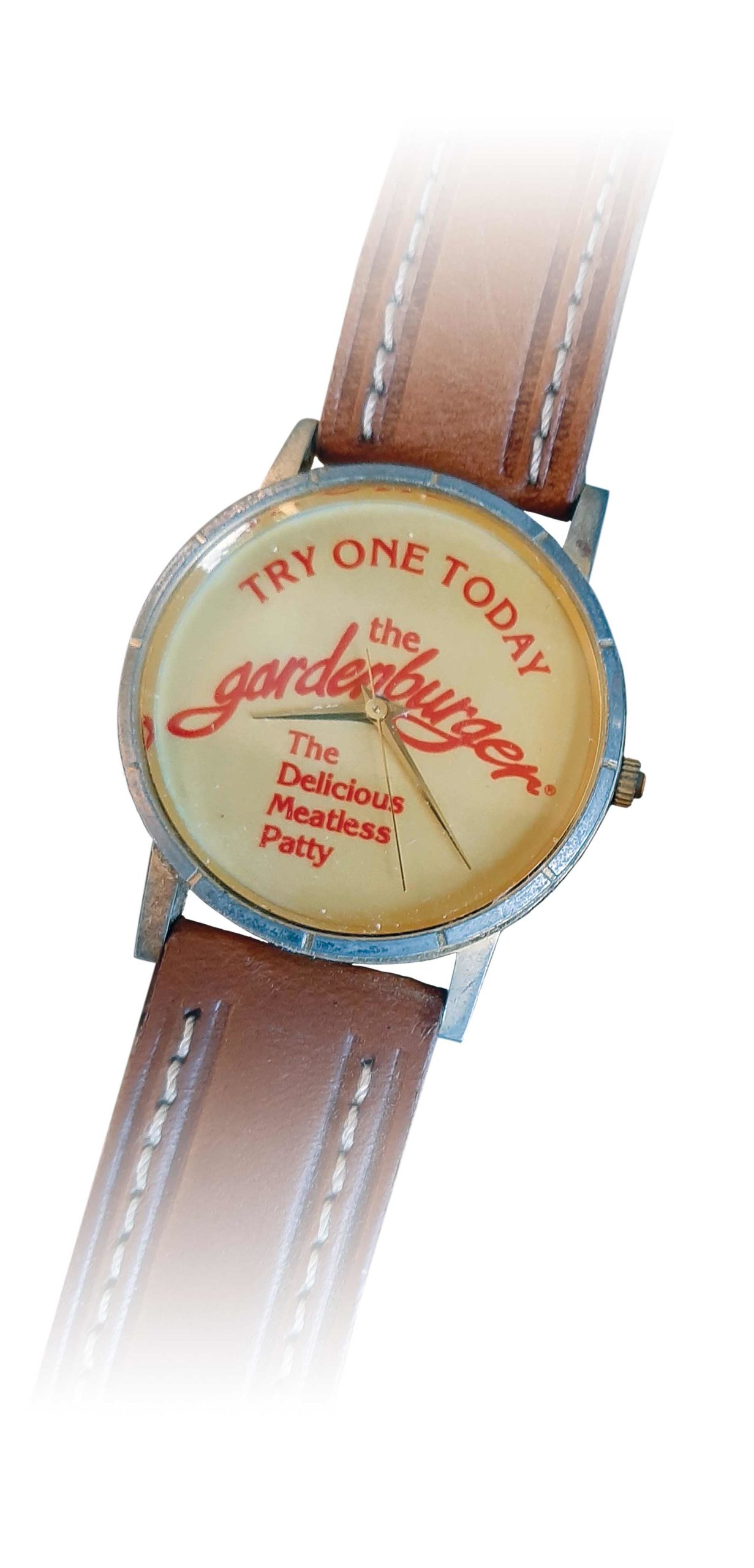
knew we had a hit when we received an order from the food service supplier for the Enid, Oklahoma school district. I turned to Paul Wenner, CEO of Gardenburger™, and said, “If we can sell it there, we can sell it anywhere in America.” “It” was the Gardenburger™, a meatless burger patty made from mushroom, onions, rolled oats, brown rice, cheeses and a few other things. It was the first meatless burger patty to go mainstream.
I came across Gardenburgers™ in the natural food section of my local grocery store in Anchorage, Alaska, in the late 1980s. The males in my family have a history of heart disease, and not too many years before my father underwent a quadruple bypass. My diet at the time was generally healthy, but his event caused me to seek out new foods, especially entrées. I found this meatless patty that was pre-baked, frozen, fit on a bun and could be prepared in numerous ways. Additionally, it did not taste like the other meatless products on the market, all of which tried to mimic the taste of meat and failed.
I became known as the guy who brought Gardenburgers™ to every social gathering. People would be grilling beef burgers, moose burgers and caribou sausages and I would be the guy who said, “Hey, do you mind throwing on one of these Gardenburgers™, too?”
In the early 1980s, Paul Wenner had a vegetarian restaurant, the Gardenhouse, in Gresham, Oregon, which at the time was a more rural community than it is now. Vegetarianism was not a mainstream notion, and it was definitely not common in a town like Gresham. As Paul struggled to make his restaurant successful, he made sure to utilize all of his excess food ingredients. He took some of those ingredients, formed them into a loaf, baked it, then sliced it into patties and browned each one.
In that form, the brown patty could be served as an entrée with a nice mushroom gravy, put between slices of rye bread for a Ruben, or served on a bun as a Gardenburger™. It was his most popular menu item, and he found that he could sell these patties to other restaurants, which provided much needed revenue to keep the Gardenhouse afloat.
After spending many long days running the restaurant and then making and selling Gardenburgers™ to other outlets, Paul needed to make a decision. Was it possible to keep the Gardenhouse going or should he just focus on the Gardenburger™ and grow the sales of that product? Seeing the increasing demand for the Gardenburger™, he closed up the Gardenhouse and put all his energy into growing Gardenburger™ sales through his new company, Wholesome and Hearty Foods.
Prior to moving to Anchorage, I lived in Portland, Oregon, and I would still visit a couple of times a year to visit family and friends. One day I was looking at the packaging for the Gardenburger™ and noticed Wholesome and Hearty Foods was based in Portland. I thought there would be nothing better in the world than to live in Portland and work for Wholesome and Hearty Foods. When on vacation in the area, I always made it a point to stop in and see if the company was hiring. I was always met at the front door by a guy who literally filled the doorframe and explained to me that they were not hiring. Eventually, I bit the bullet and moved to Portland without a job. About a year after moving, I called the company and asked to speak to Paul and, low and behold, not only did he take my call, but he was also hiring.
One thing led to another, and in 1990, after two weeks of training on the production line, I found myself as Wholesome and Hearty Foods’ head salesperson. Paul had been managing sales and running the company, and with sales at just over $1 million he needed help. I was only too eager.

We had a line of products, including two sizes of Gardenburger™, a Gardensausage™ and a Gardentaco™. All were meatless, soy-free and naturally low in fat and cholesterol. Most importantly, none of the products attempted to taste like meat. They were meant to taste like themselves. I can’t tell you how many times I would be sampling at a trade show, grocery store or other outlet, asking someone to try a bite, and the first thing out of their mouth as they scrunched up their face was, “It’s not one of those soy burgers, is it?” Once they heard it was not soy, they were willing to try it, and I quickly discovered that if I could get it in their mouths, I had a sale.
On a macro level, there was a nationwide demand for healthy eating, but there were not a lot of entrée options beyond a salad or a serving of rice pilaf with steamed vegetables. What we had – an easy-to-prepare meatless option that actually tasted good – was the right product at the right time. I started creating a marketing and sales strategy where we targeted regions of the country and built out a sales and distribution network to provide Gardenburgers™ to restaurants, hotels, hospitals, university campuses, and many other outlets on both coasts and in major cities across America.
It was about this time that we heard from the school district in Enid. We now knew we could really grow, and this opportunity provided a financial vehicle. In 1992, the company went public as WHFI on the NASDAQ. In 1993, it was the fastest growing stock on any exchange in North America. Competitors came into the market, and suddenly Wall Street analysts started covering the meatless burger sector.
The name Gardenburger™ became synonymous with veggie burger, which meant we had to police the use of the name by outlets whose menus said they served a Gardenburger™. We would write them and suggest that if they wanted to use the name Gardenburger™, then they should sell the Gardenburger™. I would give them the name of a distributor who had it in stock in their area and we would even give them a case discount for using the name. Suddenly, Gardenburgers™ could be found on the menus at restaurants like Hard Rock Café and TGI Friday’s, in hotels such as Hilton and Hyatt, and even at McMurdo Station in Antarctica. Sales grew from approximately $1 million to $24 million in less than five years.

One of the most important lessons I learned from this experience is that there’s no shortcut for gaining market acceptance. To have the impact and outcomes that were important to me and the company, I had to meet my customer’s needs. I had to serve those needs, offer a solution through expected channels and do it at a price point they would accept. If we could not do that, we could not have had the impact we were trying to achieve.
Here is a little inside data about that impact: It takes approximately 2,500 gallons of water, 12 pounds of grain, 35 pounds of topsoil and the energy equivalent of one gallon of gasoline to produce one pound of feedlot beef¹. Twenty-four million dollars in sales was equivalent to 48 million quarter-pound patties, which equates to an environmental savings of 30 billion gallons of water, 144 million pounds of grain, 420 million pounds of topsoil, and 12 million gallons of gas. I was more proud of that impact than of the $24 million in revenue.
Gardenburger™ is now owned by the Kellogg Company and sells millions and millions of Gardenbugers™ every year.
